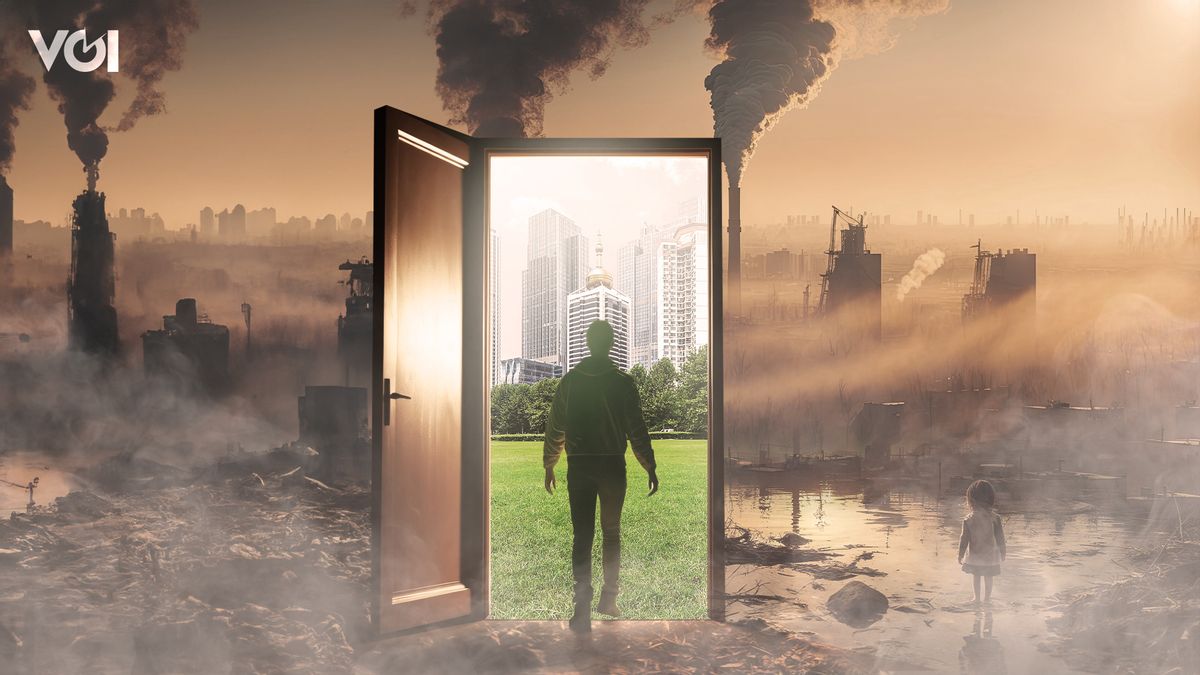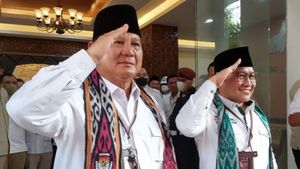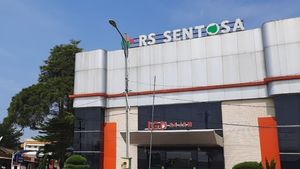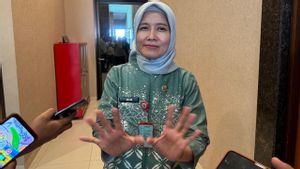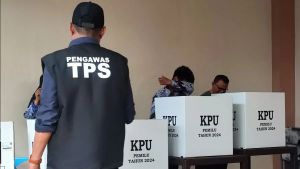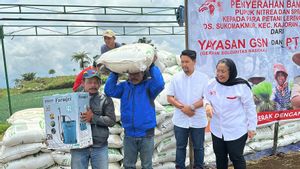JAKARTA - China, was once known as one of the countries with the highest levels of pollution in the world. Rapid economic growth in the last three decades has become a major driver of air pollution in the country. This condition is particularly prominent in the pollution patterns in the twenty worst cities in the world, where sixteen of them come from the country of the bamboo curtain. As a result of widespread air pollution problems, China's Environmental Sustainability Index has slipped to the lowest ranking in the world.
The Beijing-Tianjin-Hebei (BTH) region, which is the three main economic centers in China, is experiencing the worst effects of air pollution. Threats to the health of citizens made the Chinese Government immediately declare war on air pollution. In the span of seven years, China has succeeded in proving real change, with previously most polluted cities now breathing healthier air.
Data on air pollution from 2013 to 2017, analyzed by the National Library of Medicine (NLOM), reveals a reduction in pollution emissions in the BTH region. Entropy evaluation methods are used to estimate emissions, while partial least squares algorithms and hybrid trend extrapolation models are used for future projections.
In this case, the STIRPAT (Stochastic Impacts by Regression on Population, Affluence, and Technology) approach is used to understand the relationship between pollution emissions and a country's socio-economic indicators. Analysis shows that the reduction in air pollution emissions peaked in 2015 before then declining fluctuatingly but slowly.
It is estimated that air pollution emissions in 2025 will be lower than in 2007. Emissions of industrial waste gas play an important role in this reduction. Although the effect of dust emission is smaller than SO2 emission, it is still significant.
VOIR éGALEMENT:
Slowing economic growth in the future is expected to improve air quality. However, rapid population growth in Hebei and Tianjin may be a bottleneck. The analysis suggests that the government should specifically monitor the building materials industry sector to maintain air quality improvement.
Coal-based industrial plants and fossil-fuel power plants produce not only SO2, but also NOx, PM2.5 and Hg which contribute to air pollution and human health risks.
As the saying goes, experience is the best teacher. We can all learn and draw lessons from China's three decades of experience in dealing with air pollution, while waiting for the rains to fall. Shanghai and Beijing have succeeded in reducing pollution levels through strict regulations, including restrictions on vehicles and outdoor activities for certain age groups, and the adoption of advanced technology.
How China Tackles Air Pollution
The process of cleaning air pollution in Beijing is divided into three stages covering the periods 1998-2008, 2009-2012 and 2013-2017. The Chinese government is focusing on restructuring energy sources in three sectors: industry, transportation and housing. This energy source change is implemented in line with the pollution reduction strategy in the three phases.
The period 1998-2008 was the beginning of a decade of problem identification and target implementation. The main goal is to stop the operation of large factories that use coal as an energy source, as well as shift the energy sources of small factories to more environmentally friendly options. In addition, thousands of buses that used to run on petrol have also been switched to gas in central Beijing and six other areas, including intercity transportation routes.
China is adopting compressed natural gas (CNG) as an energy source to replace the polluting coal that has been used for decades by factories in Beijing. In this first phase, at least ten steel and iron factories stopped operating and moved to other countries, including Indonesia.

Over a period of 20 years, sulfur dioxide levels fell by 97%, nitrogen dioxide decreased by 86%, and fine particulate matter (PM2.5) decreased by 98%. In the four-year period 2013-2017, PM2.5 concentrations decreased by 36.8%, from 98.5 micrograms per cubic meter to 58 micrograms per cubic meter, although it was still 66% above the standards set by the Chinese government and WHO standards.
After revitalizing the energy structure in the industrial sector, the second phase in 2009-2012 focused on restructuring energy sources in the housing sector. Energy sources from coal have switched to gas, with the hope that there will be a reduction in emissions of four air pollutants in Beijing: nitrogen dioxide (N2O) from motorized vehicles, as well as PM2.5 and PM10 particles.
In the third phase, 2013-2017, pollution reduction efforts are stepped up by investing in eco-friendly technologies and removing two additional pollutants that need to be reduced after sulfur dioxide, nitrogen dioxide and ozone (O3). In 2013, total SO2 emissions reached 95,000 tons, N2O was 218,000 tons, and total PM2.5 and PM10 reached 349,000 tons. These four pollutants are the main focus of the Chinese government due to their significant health impacts.
In each stage, the Chinese government combines environmental protection, economic and law enforcement policies to reduce pollution. Environmental safeguards include switching to more environmentally friendly fuels, planting trees, and expanding public parks. Meanwhile, a public awareness campaign on the dangers of pollution was also intensified, by recruiting 10 environmental ambassadors to encourage community participation and promote the steps taken by the government.
Breakthrough of Air Pollution Control in Jakarta
The Indonesian government's efforts to tackle air pollution in Jakarta increasingly reflect China's success in tackling a similar problem in Beijing. President Joko Widodo has given new directions that focus on public health in handling and controlling air pollution.
The Minister of Environment and Forestry (LHK), Siti Nurbaya, revealed that the directive aims to address the root causes of pollution in the Greater Jakarta area, where 40 percent comes from motorized vehicle emissions, 34 percent from steam power plants (PLTU), and the rest from other sources such as household activities.
"The president emphasized that all actions to handle and control air pollution must be centered on public health. Settlements must be based on health aspects," said Siti Nurbaya.
Measures to deal with air pollution in the Greater Jakarta area will be led by the Coordinating Minister for Maritime Affairs and Investment, Luhut Binsar Pandjaitan. One of the approaches to be implemented is weather modification techniques, which require the right conditions to produce effective results.
The Ministry of Environment and Forestry will specifically focus on law enforcement against sources of pollution, especially from the power generation industry sector, as well as tightening vehicle emission tests.
Siti Nurbaya also added that the President ordered the planting of large trees in office areas, both government and private, to accelerate handling of air pollution in Jakarta. This tree planting has a special approach, in which the distance between trees is tighter to deal with air pollution.
This tree planting effort will be accompanied by weather modification technology to create artificial rain. This weather modification technology (TMC) has proven effective and has given positive results in Bogor. With a note, after the rain at 15.30 p.m. Western Indonesian Time (WIB), the PM2.5 Air Pollutant Standard Index (ISPU) fell from 97 to 29 at 18.30 p.m. WIB, indicating an increase in air quality in Bogor.
Other steps, such as law enforcement against industries identified as sources of pollution, have also been carried out by the Ministry of Environment and Forestry. Of the 161 industrial companies identified as air polluters, eleven of them have been prosecuted. This action starts from field operations to enforce the law against sources of air pollution, especially the power generation industry.
Siti Nurbaya stressed that these steps were in accordance with President Joko Widodo's directives, and her party would continue to carry out law enforcement actions and tighten emission testing.
Although improvements in air quality cannot happen instantly, it is hoped that this government effort will tackle air pollution and provide better results for Jakarta, taking inspiration from Beijing's success in tackling air pollution.
The English, Chinese, Japanese, Arabic, and French versions are automatically generated by the AI. So there may still be inaccuracies in translating, please always see Indonesian as our main language. (system supported by DigitalSiber.id)
